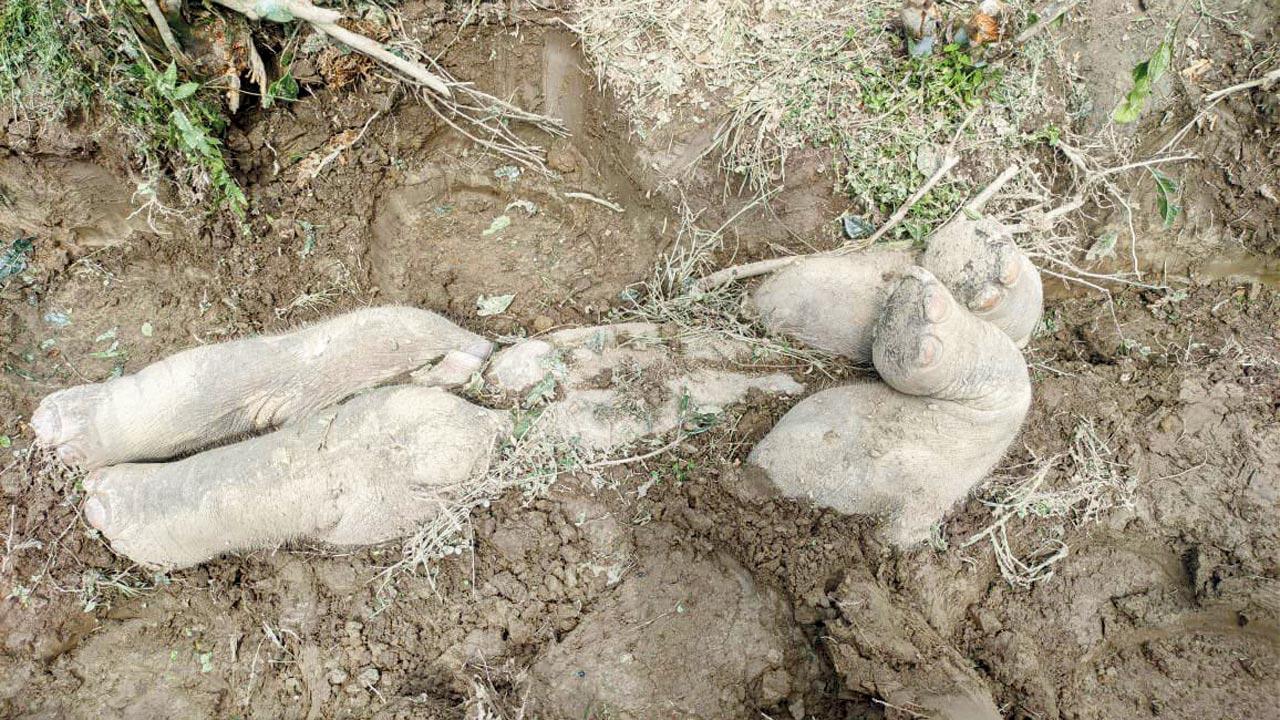
In a ground-breaking study that sheds light on the behaviour of Asian elephants, a recent paper authored by IFS Parveen Kaswan, a prominent figure in the Indian Forest Service, along with Pune-based researcher Akashdeep Roy has been published in a prestigious academic journal.
This research, the first of its kind in India, provides unprecedented insights into the burial practices of Asian elephants, revealing that elephant carcasses were transported over distances by trunks and legs before being interred in a distinctive “legs-upright position.
“Titled “Unearthing calf burials among Asian Elephants Elephas maximus Linnaeus, 1758 (Mammalia: Proboscidea: Elephantidae) in northern Bengal, India,” the paper was published in the ‘Journal of Threatened Taxa.’ The authors, IFS Parveen Kaswan and Akashdeep Roy are affiliated with the Department of Humanities and Social Sciences at the Indian Institute of Science Education and Research (IISER), Pune.
Talking to mid-day lead author of the paper Parveen Kaswan said, “For a long period, literature and wildlife professionals have faint memory about the practice of loose burial in Asian elephant herds. While full-grown elephant burial is difficult due to their size, African elephants have been known to bury their calves. However, evidence of this practice was not documented in detail in India until our latest work, published in a peer-reviewed journal, provided light on comparable incidents involving Asian elephants. The study emphasises elephants’ emotional depth and sociological nature, demonstrating their ability to engage in complex ideas, feelings, and communal rituals. Although our findings do not compare elephants to humans, they highlight their emotional intelligence and communal relationships.”
Also Read: Mumbai: City naturalist makes rare sighting of long-billed vulture
The abstract from the research states that environmental changes drive Asian and African elephants to human spaces for their needs. This study highlights novel elephant behaviours, specifically Asian elephant calf burials in the eastern Himalayan floodplains. The research focuses on fragmented forests, tea estates, and military areas, with tea estates serving as crucial elephant corridors. The paper details how elephants employ burial strategies in the irrigation drains of these tea estates.
The paper presents five case reports on elephant calf burials, aiming to understand Asian elephants’ perimortem strategy and post-mortem behaviour. Findings reveal that carcasses were carried by trunks and legs before being buried ‘legs-upright.’ Despite abnormal recumbent burial styles, no direct human intervention was recorded in the five deaths. Long-term observation notes that elephants in the region actively avoid paths where carcasses were buried. The paper connects literature on two distinct elephant species and compares thanatological studies of other sentient nonhuman species.
#elephants #grieve #bury #dead